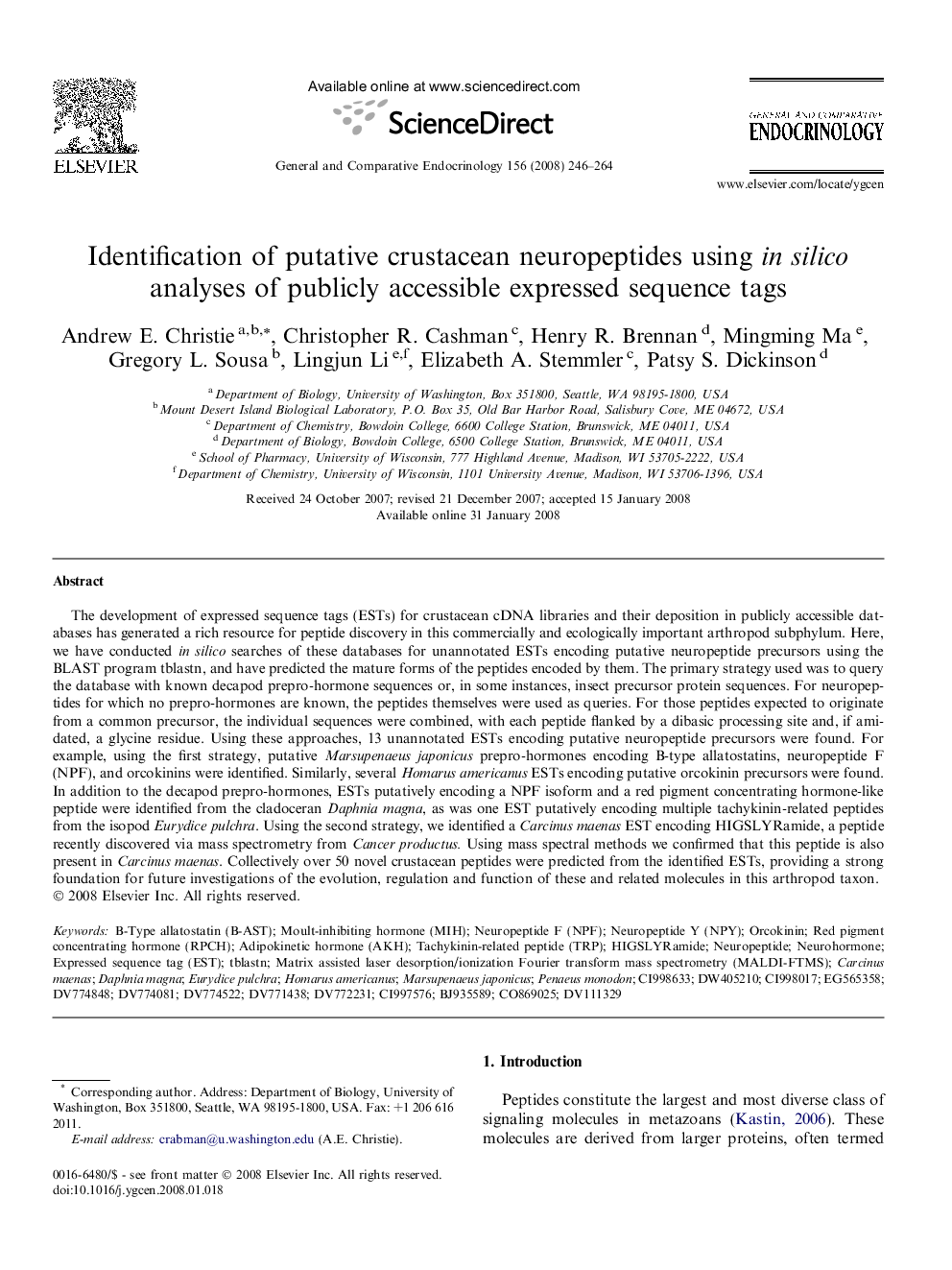| کد مقاله | کد نشریه | سال انتشار | مقاله انگلیسی | نسخه تمام متن |
|---|---|---|---|---|
| 2801643 | 1156170 | 2008 | 19 صفحه PDF | دانلود رایگان |

The development of expressed sequence tags (ESTs) for crustacean cDNA libraries and their deposition in publicly accessible databases has generated a rich resource for peptide discovery in this commercially and ecologically important arthropod subphylum. Here, we have conducted in silico searches of these databases for unannotated ESTs encoding putative neuropeptide precursors using the BLAST program tblastn, and have predicted the mature forms of the peptides encoded by them. The primary strategy used was to query the database with known decapod prepro-hormone sequences or, in some instances, insect precursor protein sequences. For neuropeptides for which no prepro-hormones are known, the peptides themselves were used as queries. For those peptides expected to originate from a common precursor, the individual sequences were combined, with each peptide flanked by a dibasic processing site and, if amidated, a glycine residue. Using these approaches, 13 unannotated ESTs encoding putative neuropeptide precursors were found. For example, using the first strategy, putative Marsupenaeus japonicus prepro-hormones encoding B-type allatostatins, neuropeptide F (NPF), and orcokinins were identified. Similarly, several Homarus americanus ESTs encoding putative orcokinin precursors were found. In addition to the decapod prepro-hormones, ESTs putatively encoding a NPF isoform and a red pigment concentrating hormone-like peptide were identified from the cladoceran Daphnia magna, as was one EST putatively encoding multiple tachykinin-related peptides from the isopod Eurydice pulchra. Using the second strategy, we identified a Carcinus maenas EST encoding HIGSLYRamide, a peptide recently discovered via mass spectrometry from Cancer productus. Using mass spectral methods we confirmed that this peptide is also present in Carcinus maenas. Collectively over 50 novel crustacean peptides were predicted from the identified ESTs, providing a strong foundation for future investigations of the evolution, regulation and function of these and related molecules in this arthropod taxon.
Journal: General and Comparative Endocrinology - Volume 156, Issue 2, 1 April 2008, Pages 246–264